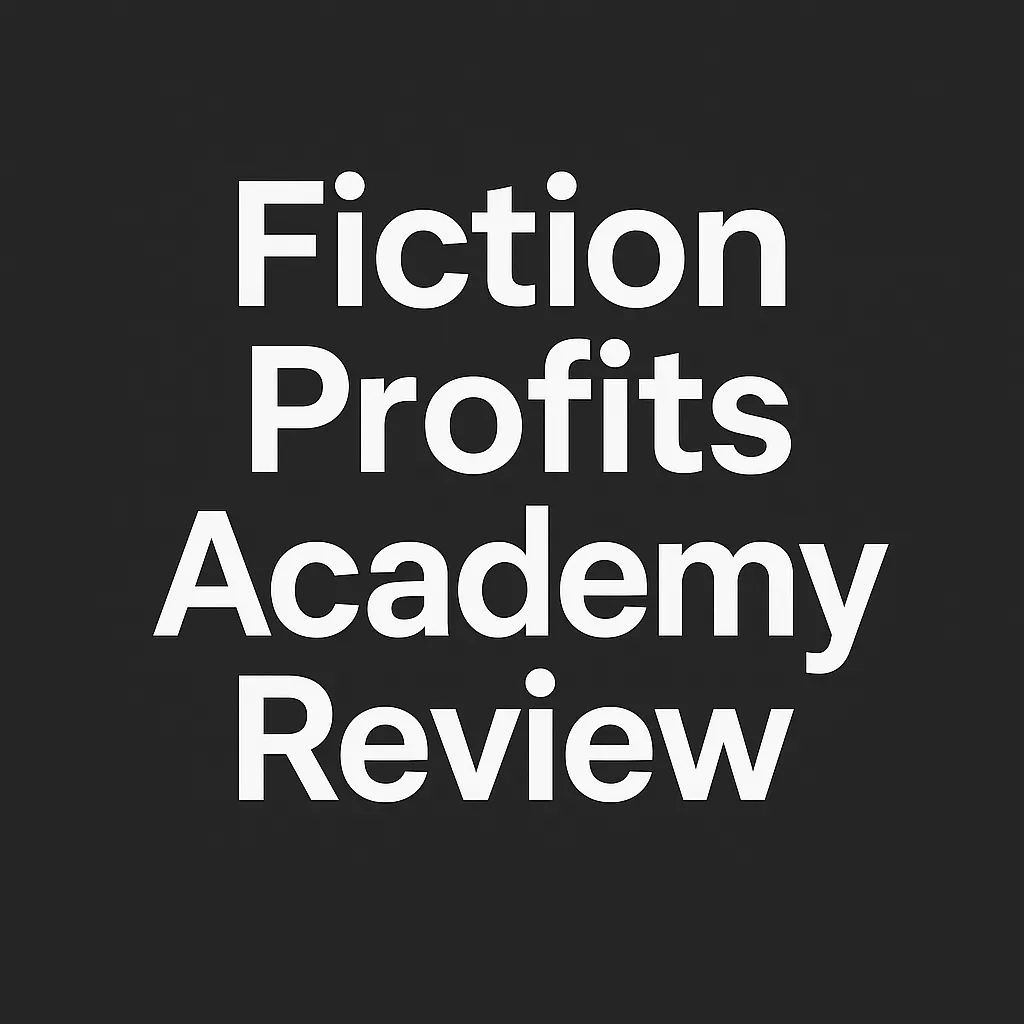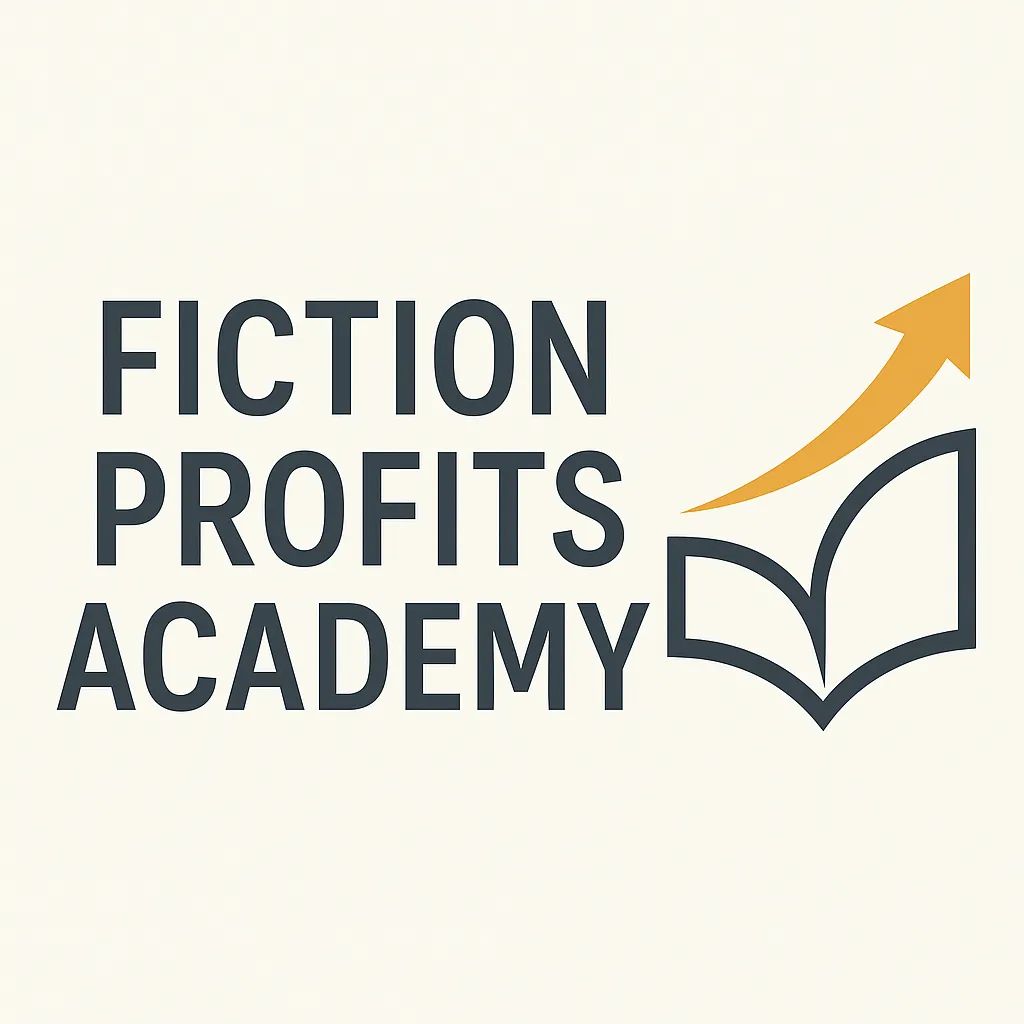Fiction Profits Academy review - What To Expect From This High Ticket Program?
Welcome to this Fiction Profits Academy review. This program is positioned as a step-by-step system for launching a publishing business on Amazon through Kindle Direct Publishing.
The pitch centers on publishing fiction books — often outsourced — and earning royalties that can turn into passive income streams.

This program is marketed as the next step after an introductory free training called the FPA Workshop that many people go through first.
The workshop itself is framed as the “starter path,” but the real methods and coaching are contained here in the full program.
My takeaway was that while the concept is made to sound beginner-friendly, the reality involves significant costs and risks.
The advertised tuition of around $1,995 (or a payment plan at $999 for three months) is only the start. Ghostwriting, editing, cover design, and advertising can push expenses far higher.
The positives are the structure, the coaching support, and the community, which give new publishers a roadmap they wouldn’t easily build on their own.
The negatives are the high upfront costs, the ongoing financial investment, and the mixed outcomes reported by students. Some do hit meaningful royalties, while many others struggle to break even.
Pros
Beginner-friendly framework for KDP publishing
Coaching calls and support community
Modules cover research, outsourcing, and marketing
Cons
$1,995 tuition plus heavy ongoing costs
Guarantee requires strict conditions to qualify
Results are inconsistent, with many failing to see profit
If you’re trying to figure out whether programs like this are the right fit, it’s worth stepping back and looking at the bigger picture.
I’ve shared some thoughts on the common traps people fall into, and how to avoid them, right here.
What is Fiction Profits Academy?
This program is framed as a complete roadmap for building a fiction publishing business through Amazon’s Kindle Direct Publishing platform.
The main idea is that instead of writing novels yourself, you outsource the work to ghostwriters, package the books with professional covers and editing, and then market them to generate royalties.
The selling point is that by following a system, anyone can step into publishing without prior writing experience.
Inside, the curriculum is broken into structured modules. These cover how to identify profitable niches, how to vet and hire writers, how to manage editing and formatting, and how to build a publishing brand that can handle multiple titles.
Marketing plays a significant role too, with guidance on running ads, optimizing book descriptions, and using categories and keywords to gain traction on Amazon.
The program doesn’t just stop at technical steps—it also emphasizes mindset and business foundations, aiming to position students as entrepreneurs rather than hobbyists.
From a distance, the pitch feels comprehensive. The promise is that by applying the steps, it’s possible to create a catalog of books that generate ongoing royalties.
However, it’s worth keeping in mind that every stage—ghostwriting, editing, cover design, advertising—adds additional costs on top of tuition.
The system is meant to simplify the learning curve, but it doesn’t remove the financial and operational risks tied to publishing.
My Personal Experience With Fiction Profits Academy

When I first went through the program, the structure stood out. Everything was laid out step by step, from choosing niches to outsourcing writing and getting books live on Amazon.
Having a clear roadmap made the process less overwhelming, especially compared to trying to piece things together through scattered online resources.
The coaching calls and the community also provided a sense of accountability, which helped me stay on track.
That said, the financial side quickly became a major factor. Beyond the tuition, I found myself paying for ghostwriters, cover designers, editing services, and advertising campaigns.
Each book was an investment of hundreds of dollars, and that added up fast. Some of the books did sell and bring in royalties, but the profit margins weren’t as high as the initial pitch suggested.
A few titles struggled to gain traction at all, despite following the steps closely.
The biggest takeaway for me was how much time and effort went into managing the entire process.
Outsourcing didn’t mean I could step back entirely — it meant I had to act as a project manager, constantly communicating with writers, checking drafts, and adjusting ads.
It wasn’t passive at all. There were moments of progress and some encouraging results, but the reality was far more demanding and uncertain than the marketing made it sound.
Looking back, I don’t think the biggest risk was the system itself — it was going in without understanding what it truly demands. I’ve written more about how to avoid that mistake here.
How Much Does Fiction Profits Academy Cost and What's The Refund Policy?
The cost to join the program was presented as a flat tuition of around $1,995, with the option of a three-month payment plan at $999 each.
That alone was a big decision point, but it quickly became clear that tuition was just the beginning.
Every book I worked on came with additional expenses — ghostwriting fees ranging from $300 to $800 per project, editing charges, cover design, and eventually advertising costs.
By the time one title was fully ready and launched, the total outlay often pushed well beyond the initial tuition.
On the refund side, the guarantee sounded reassuring at first. It promised a chance to get your money back if you didn’t see results, but the conditions made it difficult to qualify.
You had to show that you had gone through every module, completed all required steps, and launched a certain number of books according to their criteria.
In practice, this meant investing heavily in outsourced work before even being eligible to apply for a refund.
That made it less of a safety net and more of a risk that had to be absorbed upfront.
The price tag itself wouldn’t be unreasonable if results were more predictable, but the variability was what stood out.
A few books had modest traction, but many failed to recover what was spent, even when following the steps carefully.
The recurring monthly costs of outsourcing and marketing were what shifted this from a one-time investment into an ongoing financial commitment that had to be weighed carefully.
Fiction Profits Academy Student Results and Testimonials
One of the things that stood out to me was how uneven the reported outcomes were. Some students shared screenshots of steady royalties, even showing a few thousand dollars a month from a catalog of books.
Others, though, posted about struggling to make even a handful of sales despite following the system closely.
My own experience echoed this divide — there were small wins, but nothing consistent enough to feel like a stable income stream.
The testimonials highlighted by the program lean heavily toward the success stories.
Those examples make the system look almost foolproof, but conversations within the community painted a more realistic picture.
Many people were working long hours, spending hundreds on ghostwriters and ads, and still waiting for traction. A few admitted they had invested thousands and seen little return.
What this made clear to me was that while the framework can work for some, the majority don’t hit the advertised results.
That isn’t necessarily because the steps are useless, but because publishing in such a crowded market depends on more than just following a formula.
Timing, competition, and sheer luck play bigger roles than the promotional material admits.
The positive side is that there are examples of it working, which means the system isn’t without merit.
The downside is that there’s no guarantee of landing in that smaller group of success stories, no matter how closely you follow the blueprint.
Fiction Profits Academy Pros and Cons
What I found most helpful about the program was the structure. Having the entire publishing process broken down into modules made it easier to approach something as overwhelming as building a catalog of fiction books.
The coaching calls and private community added another layer of support, which gave me a place to ask questions and see how others were tackling similar challenges.
For beginners who want a guided system instead of piecing information together on their own, that structure can be reassuring.
On the other hand, the costs were a major drawback. Tuition was only the starting point — outsourcing writing, paying for editing, and running ads quickly made this a high-expense endeavor.
Even though the program positioned itself as beginner-friendly, the reality was that the level of investment required placed it out of reach for many.
The refund guarantee existed, but the requirements were strict enough that it didn’t feel like a reliable safety net.
The inconsistency in results was another issue. Some participants found success, while many more struggled to see returns.
That inconsistency wasn’t unique to this program — it’s common across most publishing models — but the marketing often implied a smoother path than I saw in practice.
So while there are definite advantages in terms of organization, guidance, and community, those positives are balanced by high costs, financial risks, and no assurance of predictable outcomes.
Final Verdict
Looking back, Fiction Profits Academy offered a structured way to enter self-publishing, especially for those who don’t want to write books themselves.
The framework is detailed, the support network is active, and the roadmap removes some of the guesswork that usually comes with starting an online business.
Those aspects made the experience valuable in terms of clarity and confidence.
But clarity doesn’t erase the costs or the risks. Tuition was only the first hurdle, and the reality of outsourcing multiple books meant the investment kept growing.
Even when the steps were followed carefully, outcomes varied widely, with some titles gaining traction and others barely moving.
It became clear that this wasn’t the kind of system where effort automatically translated into profit.
The time, money, and energy required made it far from the “passive” income opportunity it was pitched as.
For someone with the budget to absorb high upfront expenses and the persistence to manage multiple moving parts, it can be a way into publishing.
For most, though, the gap between the marketing promise and the day-to-day grind is significant.
That doesn’t make it worthless, but it does mean expectations have to be set realistically before going in.
If you’re weighing whether this path makes sense, it might help to first understand why so many people fall short even when the steps are laid out. I’ve explained that pattern in more detail here.